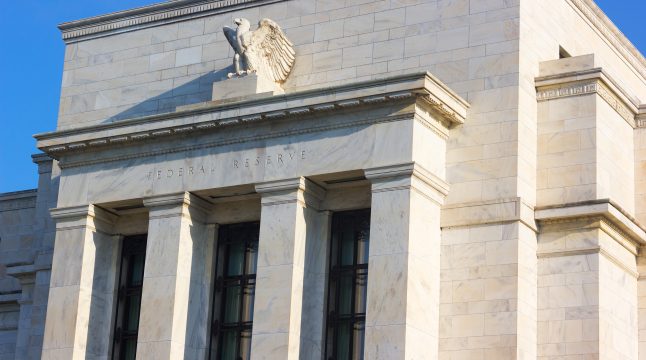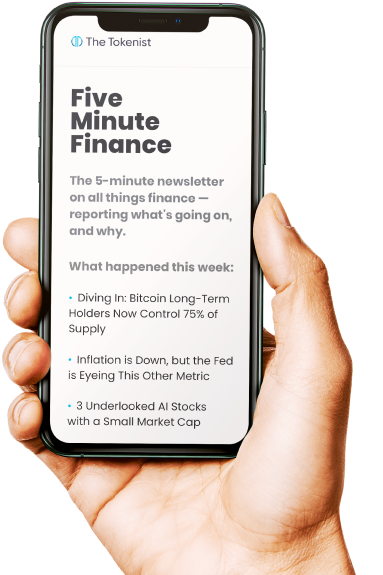
3 Stocks to Buy as Fed Rate Cuts Reshape the Market
To little surprise, the Federal Reserve lowered interest rates by 25 bps (0.25%) on Wednesday, the first cut since late 2024. Now in the 4%-4.25% range, the Fed’s interest rate is likely to see two more cuts by the year’s end.
This follows record-breaking BLS jobs revision of -910,000 between April 2024 and March 2025, once again showing institutional deception when it comes to macroeconomic data. Not only is the labor market weaker than previously thought, it appears there is a divergence in economic growth.
According to the Bank of America Institute, annual wage growth for the bottom third is falling, while it is rising for the top third of earners, at -0.9% vs 3.6% YoY respectively. In other words, a K-shaped economy is emerging.
The question is, how should investors approach a K-shaped economy with thriving higher-income earners while others, typically younger workers, struggle?
Digital Realty Trust Inc. (NYSE: DLR)
As a real estate investment trust (REIT), Digital Realty specializes in acquiring and managing real estate specifically for data centers. This is the only sector showing high growth owing to AI expectations as the foundations of a new form of governance are laid down.
Moreover, USG is mirroring the management style of the Chinese Communist Party (CCP) in terms of tightly coordinating efforts between the largest tech firms and critical infrastructure providers such as nuclear utility companies.
Data centers, where Digital Realty operates, are becoming the backbone of this monumental effort. Consequently, this puts the trust at the intersection of geopolitical strategy against China and technological necessity. In Q2 earnings, the Dallas-based company reported 10% revenue growth from the year-ago quarter at $1.49 billion. Funds From Operations (FFO) came in at $600 million – $1.75 per share – compared to $1.57 per share in the year-ago quarter.
With more rate cuts expected, Digital Realty’s balance sheet is positioned to improve as borrowing costs keep dropping. As of Q2, the company’s total debt outstanding is $18.5 billion of which $17.7 billion is unsecured.
According to WSJ’s forecasting consensus, the average DLR price target is well above the current price of $172.47 at $195.70 per share. The bottom price outlook is not that far off at $141 while the ceiling price target for DLR stock is $220.
On top of prospective price targets, Digital Realty gives 2.84% dividend yield at a quarterly payout of $1.22 per share.
Join our Telegram group and never miss a breaking digital asset story.
T-Mobile US Inc. (NASDAQ: TMUS)
Rate cuts greatly benefit capital-intensive sectors like telecom. After all, as capital gets cheaper, it is easier to spend on network upgrades, strategic acquisitions and balance sheet optimization.
T-Mobile has solidified its position as one of the leaders in 5G deployment and customer growth. Not only is the company’s 12% YoY 5G net customer growth the best in the industry (as of Q2), but T-Mobile had its highest-ever net income of $3.2 billion in Q2, representing a profitability growth of 10% YoY.
With its early August integration of UScellular for increased synergies, T-Mobile’s network coverage and cost structure is further likely to improve. Combined with a free cash flow of $5.07 billion and low debt, the company is the most likely to outperform its telecom peers.
This is why the TMUS price target is presently above that of AT&T and Verizon. Against the current price of $239.83, the average TMUS price target is $269.40 per share, with a low of $200 and a high of $309.
Additionally, this Thursday, T-Mobile raised its quarterly dividend by 16%, now paying $1.02 per share.
Valero Energy Corp. (NYSE: VLO)
The Texas-based petroleum refiner had multiple sharp rallies this year, giving 31.5% YTD performance. The company not only has strong financial resilience but also strategic positioning in renewable fuels, as the second-largest producer of corn ethanol.
As of Q2 earnings, Valero held $4.5 billion in cash reserves while only having a net debt-to-capitalization ratio of 19%. With such a low debt load, the company has flexibility to fund growth initiatives or accelerate shareholder returns as rate cuts make capital cheaper.
And although the Trump admin is already energy-friendly, Valero’s Diamond Green Diesel joint venture positions it at the crossroads of traditional refining and energy transition, if regulatory winds were to shift. In the case of demand surge, Valero’s Gulf Coast-focused refining operations provide access to export markets.
This is especially notable given recent geopolitics. In particular, owing to Europe’s subjugation to American interests, the recent EU-US deal inked a requirement for the EU to buy $250 billion worth of oil and liquified natural gas (LNG) annually for the next three years.
As the company expands production capacity with St. Charles Refinery (scheduled for 2026), investors should expect further margin improvements. Through stock buybacks and dividends, Valero returned $695 million to shareholders in Q2 alone. Following 37 consecutive years of dividend payouts, Valero’s present quarterly dividend is $1.13 per share.
According to WSJ’s forecasting data, there are no bearish analysts. Their average VLO price target is $169.13 against the current price of $161.34 per share. The expected low is $147, while the price ceiling for VLO stock is $200 per share.
Disclaimer: The author does not hold or have a position in any securities discussed in the article. All stock prices were quoted at the time of writing.




